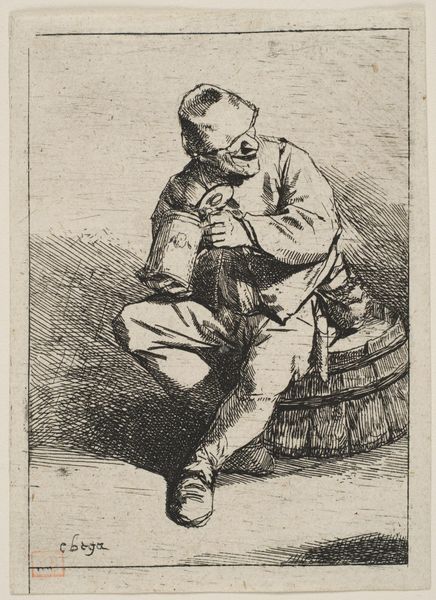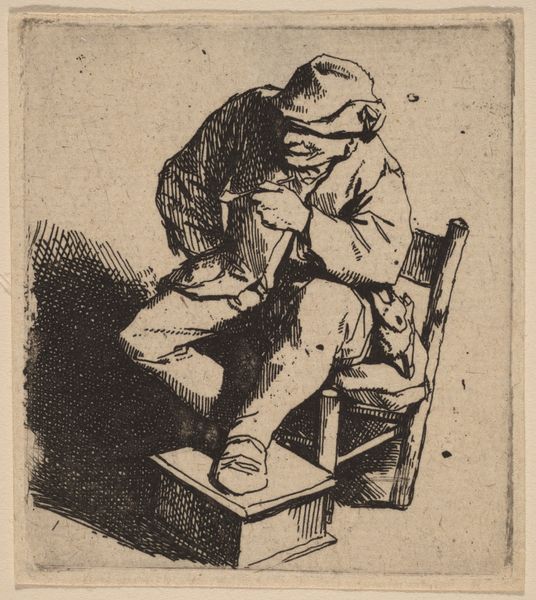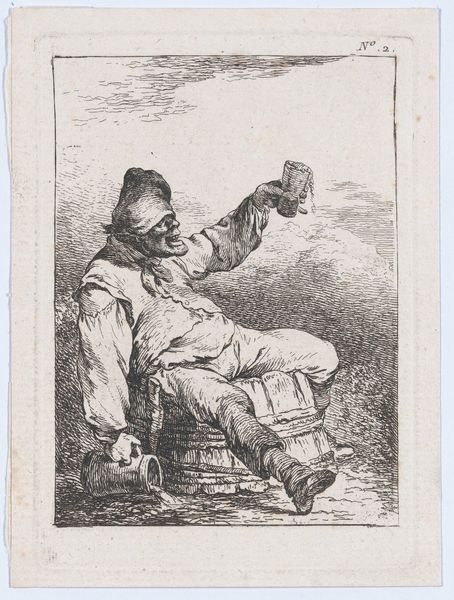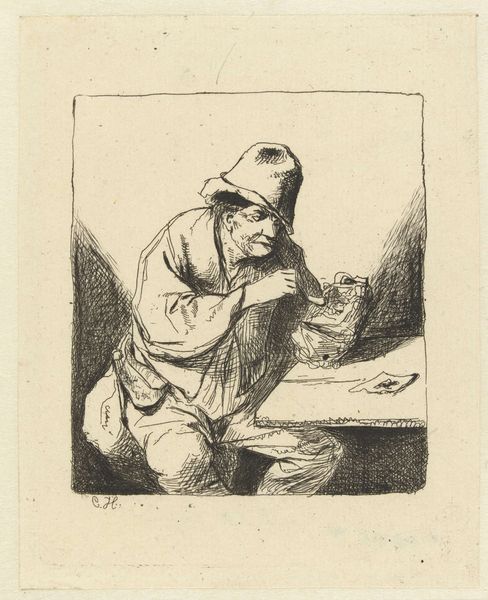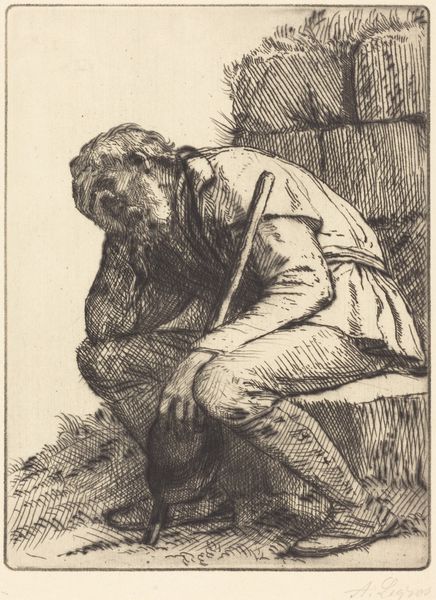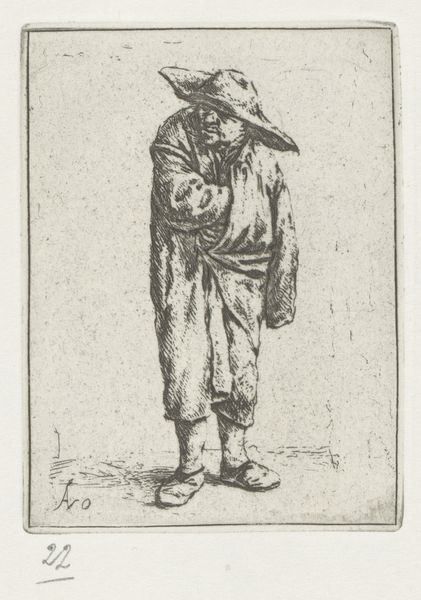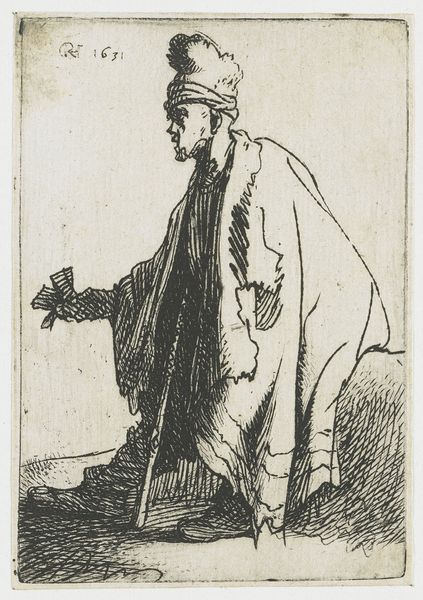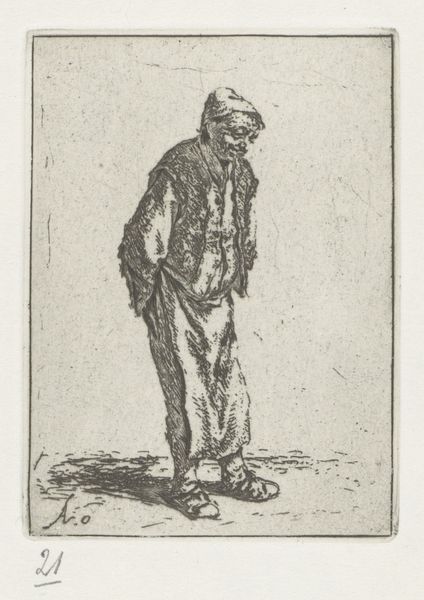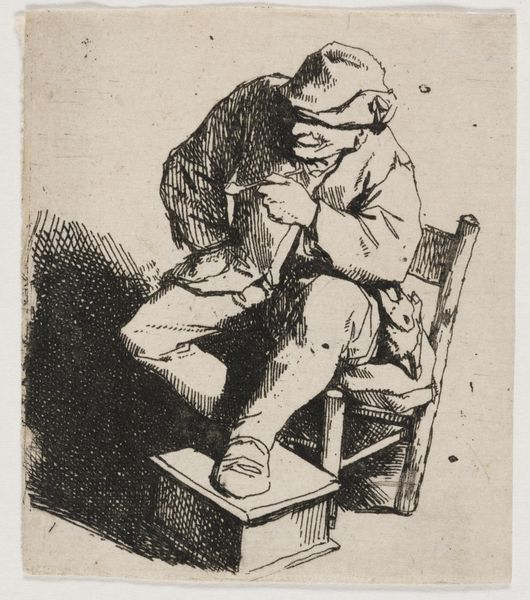
print, etching
#
portrait
#
dutch-golden-age
# print
#
etching
#
figuration
#
genre-painting
Dimensions: sheet: 10.6 × 7 cm (4 3/16 × 2 3/4 in.)
Copyright: National Gallery of Art: CC0 1.0
Editor: So, here we have "The Drinker," an etching by Cornelis Bega from the Dutch Golden Age. It depicts a man, perhaps a peasant, perched on a barrel with a large mug. It feels… informal, a glimpse into everyday life. What strikes you most about this piece? Curator: What’s interesting to me is the context. Prints like this were widely distributed and relatively affordable. This piece provides a glimpse into the burgeoning market for genre scenes – everyday life depictions – aimed at a growing middle class. It begs the question: what role did these images play in shaping societal views of different social strata? Did these images merely reflect life, or did they help solidify class distinctions? Editor: That's a great point! It makes me think about the gaze of the viewer. Is this meant to be a sympathetic portrayal or something more critical, perhaps even a caricature? Curator: Precisely! Consider the prevailing social climate in the Dutch Golden Age. The rise of wealthy merchants and a sophisticated urban culture coincided with representations of the “common man.” To understand the artist’s intentions, we need to investigate the reception of such works. Were they consumed primarily by the wealthy? If so, how did they interpret this figure? Are we observing a harmless pastime or are there underlying tones that reveal societal anxieties? Editor: So, it is not just about what’s in the image, but also who was looking at it and how they were conditioned to see it? Curator: Exactly. This is a window into not only a person but a society. This helps us examine the power dynamics inherent in image-making and distribution. Editor: That really reframes how I see this work. It is more complex than I initially thought. Thank you! Curator: My pleasure. Art gives us an insight into the spirit and nature of any era in time!
Comments
No comments
Be the first to comment and join the conversation on the ultimate creative platform.
